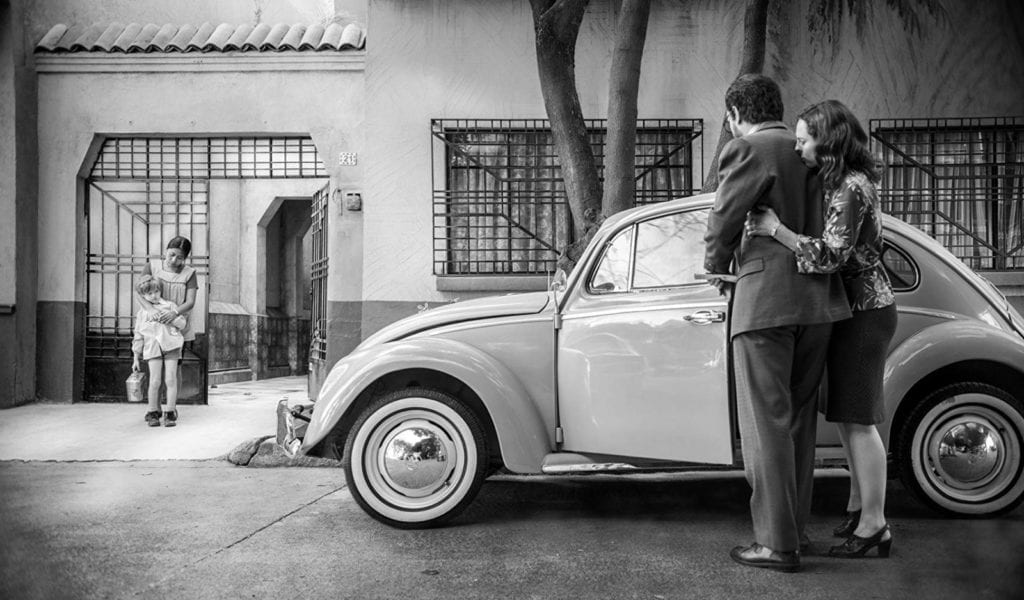Mexican director Alfonso Cuarón’s film “Roma” in 2019 was the first-ever film in Spanish to be an Oscar nominee for the Best Picture award and won three Academy of Motion Picture Arts and Sciences awards from 10 nominations.

“Roma”, first presented in 2018, was a true revelation of Mexican director Alfonso Cuarón, world-renowned for his work on “Gravity”, “Children of Man” and “Harry Potter and the Prisoner of Azkaban”. The film “Roma” is deeply autobiographical. Itis a narrative of Cuarón’s obsession since he acted not only as a director and producer but also as a cameraman and scriptwriter.
“There are periods in history that scar societies and moments in life that transform us as individuals.” — The film slogan
The idea of making that film was hatched by Cuarón for many years, but, according to the author himself, it was only in 2016 that he had at his disposal suitable technical capabilities and, more importantly, sufficient emotional resources to ponder over his own childhood experience and transform these reflections into a very intimate story of a middle-class Mexican family, captured through the eyes of their housekeeper and nanny. According to Alfonso Cuarón, the script was inspired by Liboria Rodríguez, the director’s nanny who took care of him as a child and became his second mother.
Netflix purchased the film distribution rights. As a result, the film of exceptional cinematic virtuosity, produced with astonishing visual care with a 65mm digital camera, had limited theatrically release. However, it is known that in the spring of 2019, at the personal request of Alfonso Cuarón, who wanted to demonstrate the film to Russian director Andrei Zvyagintsev and cameraman Mikhail Krichman, a private showing was organized in Moscow. But without a wide screening, many could lose sight of this iconic picture. The COVID-19 pandemic, which has boosted the popularity of streaming services, came in handy and contributed to the growth of interest in the film, which won three Oscars (2019), two Golden Globes (2019), four British Academy prizes (2019), Goya Prize (2019) and Venetian Golden Lion (2018).
This is a genuine festival movie that falls into the art-house category. Watching it to distract yourself from the worries and everyday routine is against your better judgment. It does not work like that. On the contrary, Cuarón’s artistry is capable of immersing you in the very depths of social drama by providing an effect of presence, breaking the “fourth wall” and making you a part of cinematic reality. You can get pleasure from it only by accepting the rules of the game.
The film “Roma” is a very personal, even intimate, narrative, the language of which is universal to the point of mundanity. The detailed black and white footage is a tribute to 1960-s cinema and a powerful artistic tool that pushes the boundaries of time and space as well. It smoothly builds a complex plot architecture based on contrasts, while a series of day-to-day episodes devoid of sentimentality allows us to convey the perception of time that now, in the 21st century, has already been lost.
The film is set in the early 70-s of the XXth century in Mexico City. In the centre of the plot is one of the families of the wealthy area of the Mexican capital — Colonia Roma, where Alfonso Cuarón spent his childhood. The main character is Cleo, a young hardworking housekeeper who dreams of love. She links the prosperous life of the family she works for and the outside world. While her personal drama overlaps the everyday life and family relationships of her employers, the growing interdependence between these parallel worlds, divided by complex socio-hierarchical and racial biases, is gradually revealing deep cracks in both realities, through which the socio-political tension of Mexican society appears. And the climaxes in the lives of the protagonists coincide with the massacre of student demonstrators in Mexico City in June 1971.
The Mixtecs (in Spanish los Mixtecos) is one of the indigenous peoples of Mexico inhabiting a mountainous region located between the three modern Mexican states — Guerrero, Oaxaca and Puebla. The history of the Mixtec people goes back several centuries. The Mixtecs speak many dialects of the Mixtec language. According to some estimates, the number of this ethnic group in Mexico reaches 500 thousand people.
“I wanted it to look like a film from the past, but not nostalgic,” said Alfonso Cuarón, “it was the conflict between memory and today”.
The film resulted to be cutting-edge by the virtue of the compound images of the central female characters, which formed the emotional basis of the film. By his work, Cuarón has glorified the two women played a decisive role in his formation. While writing the script, the author spent long hours talking with Liboria to better understand her experience and precisely express the feelings she had. Then a toilsome casting followed. The actresses had not only to be convincing in their role but to preserve spontaneity and humanity in the frame, no different from real people. Marina de Tavira, familiar to the director for her work in the Mexican film industry, was immediately invited to the role of the mother of the family. But finding someone to cast the nanny turned out to be difficult. The search took almost a year, thousands of candidates were considered before finding an actress for the role of Cleo.
Yalitza Aparicio, originally from Tlasiaco, Oaxaca, never dreamed of an acting career or even knew how important Alfonso Cuarón was in the world of cinema. As Yalitza said in an interview, she and her parents were wary of participating in the casting, because they feared that it might be related to human trafficking. But the woman decided to take a chance and conquered the director with her sincere simplicity.
To create a hyper-realistic portrait of his memories, Cuarón filmed in chronological order, telling the actors only what they need to know to work on specific scenes. As a result, the scripted dialogues were filled with life and acting improvisation. Add to this the real sound of Mexico City, since the voice of the streets is also clearly audible in the frame, as well as the original Mixtec language that Yalitza Aparicio had to learn for filming.
Subtle camera work allowed Cuarón to preserve a uniform visual style and smooth out the rigidity of individual images, giving them a deliberate idealism. For all the contemplativeness of the frame, the camera relentlessly follows the characters, creating its special dynamism of the narrative. Both the house and its environment, like many other elements of the composition particularly expressive in their wordlessness, are also essential actors.
For Cuarón it was especially important to recreate the atmosphere of his childhood in the smallest detail, therefore, in addition to authentic sound and meditative rhythm, the film crew painstakingly selected material artefacts for the frame: most of the props are original pieces of furniture and household items borrowed from relatives and friends. For filming, one of the crossroads of the city was even built in the same way as the director’s memories preserved it.
Every detail of the film “Roma” is filled with feeling and awe, nothing causes the author’s indifference, and the viewer, in turn, cannot remain indifferent. But this movie is not suitable for entertainment. It is deeply symbolic and requires a lot of emotional and intellectual work from the audience. It is a mosaic of metaphorical images, which cannot be solved without filling the author’s pauses with the viewer’s subjective emotions. Only in this way does the film acquire its integrity. Of course, it is a little easier for the Mexican viewer to grasp the socio-political context, but the beauty of “Roma” is that its visual language is universal.
“As I’ve seen the film more times, what I start to notice are more details that were lost to me on the first viewing, things that are sort of in the backdrop of the shots. And I have also found humorous moments in the film that I didn’t quite capture the first time that I saw it.” — Yalitza Aparicio
If you haven’t yet seen this masterpiece of world cinema, then we sincerely wish you a good viewing! But even if you have already watched the film “Roma”, take the time to watch it again with the appropriate mood. Regardless of your first reaction, you will surely discover something new. Especially if you start with the documentary “Road to Roma”, released in early 2020, where Alfonso Cuarón reflects on his childhood and also explains some of his creative ideas implemented in the film “Roma”.


